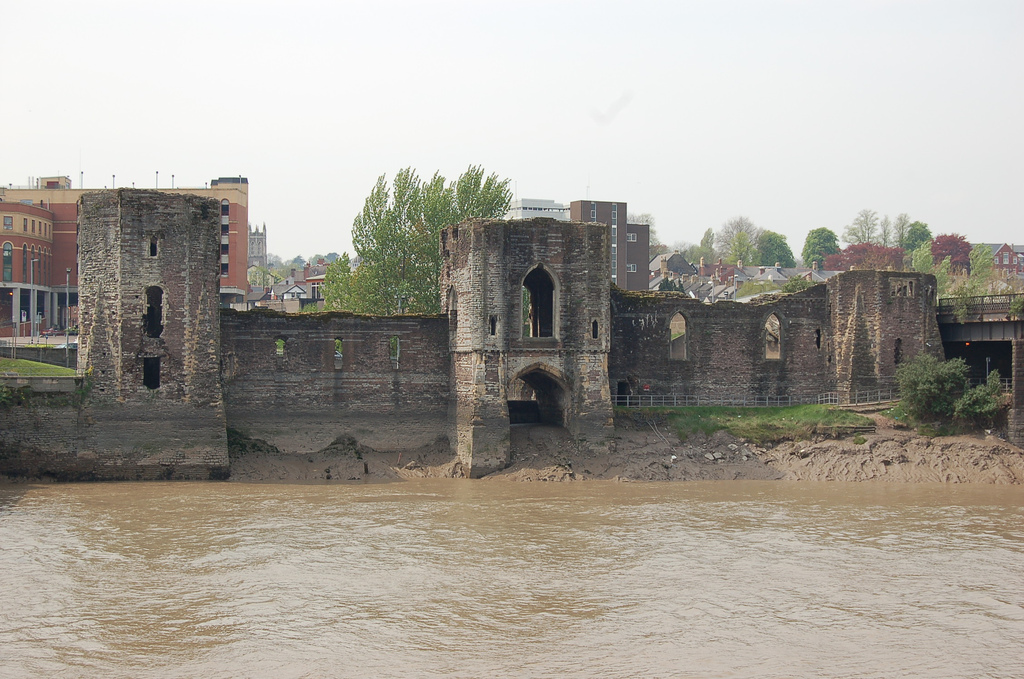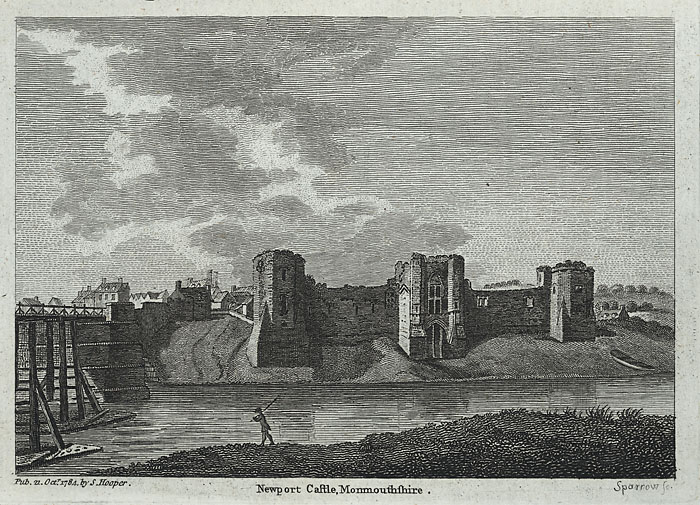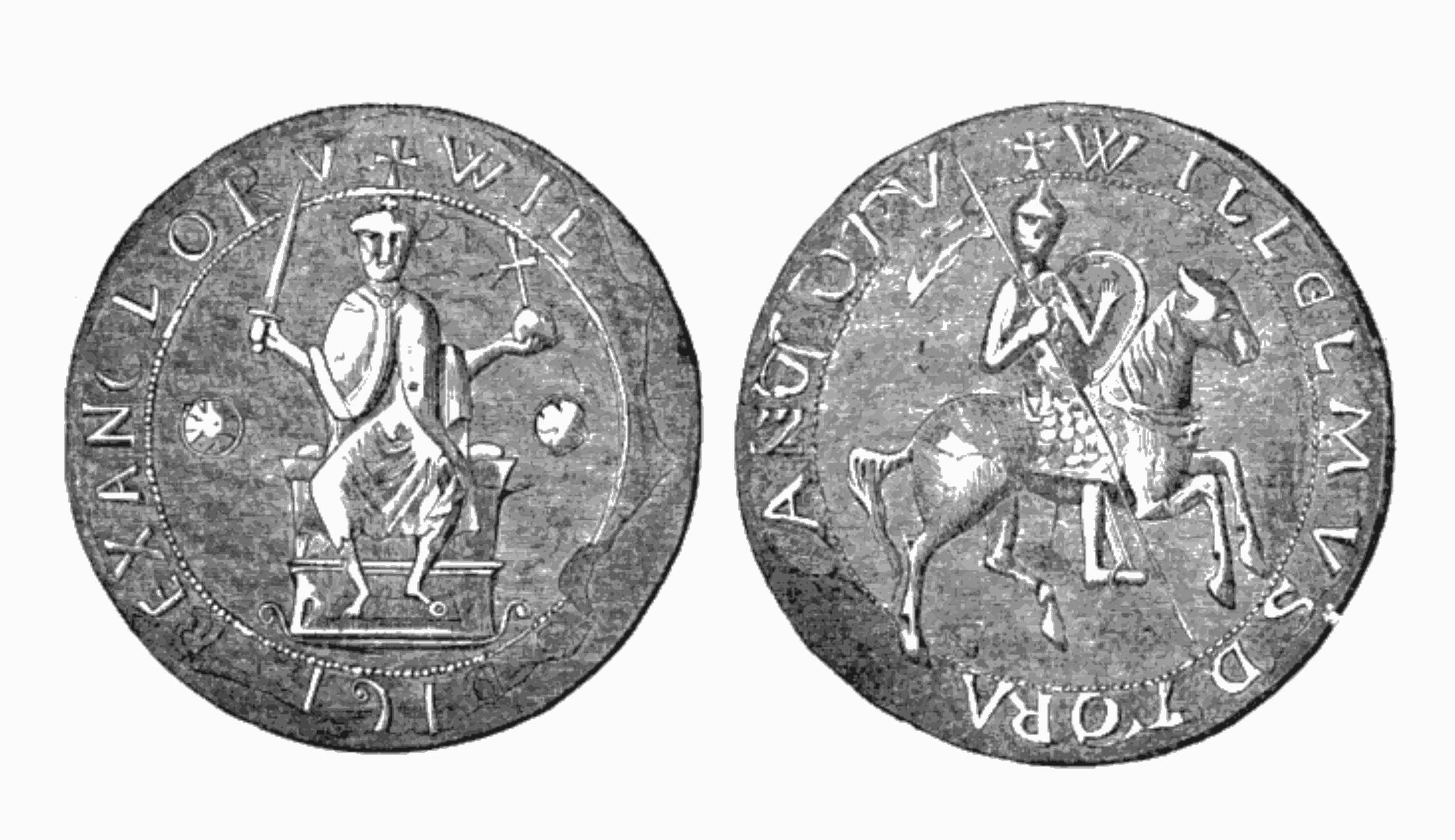|
Newport Castle
Newport Castle ( cy, Castell Casnewydd) is a ruined castle in Newport, Wales. It was built in the 14th century, probably by Hugh de Audley, 1st Earl of Gloucester or his son-in-law, Ralph, Earl of Stafford, with the purpose of managing the crossing of the River Usk. The castle was used as administrative offices for the collection of rent and dues from local tenants, and was also a residence and a garrison. In 1402 it was sacked by Owain Glyndŵr. It was in disrepair by 1522, and was taken by Oliver Cromwell's forces during the Civil War. Its use declined further in later centuries. It has been a Grade II* Listed building since 1951. Location The castle is in the city of Newport between the Newport Bridge and the neighbouring railway bridge, on the west bank of the River Usk. It is adjacent to the B4591 ( A4042), at the Old Green interchange. Description The castle was built of Old Red Sandstone and local grey limestone. Originally, it was surrounded by a moat, within ... [...More Info...] [...Related Items...] OR: [Wikipedia] [Google] [Baidu] |
Newport, Wales
Newport ( cy, Casnewydd; ) is a city and Local government in Wales#Principal areas, county borough in Wales, situated on the River Usk close to its confluence with the Severn Estuary, northeast of Cardiff. With a population of 145,700 at the 2011 census, Newport is the third-largest authority with City status in the United Kingdom, city status in Wales, and seventh List of Welsh principal areas, most populous overall. Newport became a unitary authority in 1996 and forms part of the Cardiff-Newport metropolitan area. Newport was the site of the last large-scale armed insurrection in Great Britain, the Newport Rising of 1839. Newport has been a port since medieval times when the first Newport Castle was built by the Normans. The town outgrew the earlier Roman Britain, Roman town of Caerleon, immediately upstream and now part of the borough. Newport gained its first Municipal charter, charter in 1314. It grew significantly in the 19th century when its port became the focus of Coa ... [...More Info...] [...Related Items...] OR: [Wikipedia] [Google] [Baidu] |
Curtain Wall (fortification)
A curtain wall is a defensive wall between two fortified towers or bastions of a castle, fortress, or town. Ancient fortifications Evidence for curtain walls or a series of walls surrounding a town or fortress can be found in the historical sources from Assyria and Egypt. Some notable examples are ancient Tel Lachish in Israel and Buhen in Egypt. Curtain walls were built across Europe during the Roman Empire; the early 5th century Theodosian Walls of Constantinople influenced the builders of medieval castles many centuries later. Curtain wall castles In medieval castles, the area surrounded by a curtain wall, with or without towers, is known as the bailey. The outermost walls with their integrated bastions and wall towers together make up the enceinte or main defensive line enclosing the site. In medieval designs of castle and town, the curtain walls were often built to a considerable height and were fronted by a ditch or moat to make assault difficult. Walls were toppe ... [...More Info...] [...Related Items...] OR: [Wikipedia] [Google] [Baidu] |
Brut Y Tywysogion
''Brut y Tywysogion'' ( en, Chronicle of the Princes) is one of the most important primary sources for Welsh history. It is an annalistic chronicle that serves as a continuation of Geoffrey of Monmouth’s ''Historia Regum Britanniae''. ''Brut y Tywysogion'' has survived as several Welsh translations of an original Latin version, which has not itself survived. The most important versions are the one in Robert Vaughan's Peniarth MS. 20 and the slightly less complete one in the Red Book of Hergest. The version entitled '' Brenhinoedd y Saeson'' (''Kings of the English'') combines material from the Welsh annals with material from an English source. The Peniarth MS. 20 version begins in 682 with a record of the death of Cadwaladr and ends in 1332. The entries for the earlier years are brief, usually records of deaths and events such as eclipses, plagues or earthquakes, but later entries are much more detailed. The main focus is on the rulers of the kingdoms of Gwynedd, Powys and ... [...More Info...] [...Related Items...] OR: [Wikipedia] [Google] [Baidu] |
Iorwerth Drwyndwn
Iorwerth mab Owain Gwynedd (or Iorwerth Drwyndwn meaning "the flat-nosed"), (c. 1130–1174), was the eldest legitimate son of Owain Gwynedd (the king of Gwynedd) and his first wife Gwladys (Gladys) ferch Llywarch. He married Marared ferch Madog. His son, Llywelyn the Great, eventually united the realm and became known as ''Llywelyn Fawr'' and is one of Wales's most famous monarchs. Iorwerth received Nant Conwy as his inheritance from his father, Owain Gwynedd. However, he did not receive the crown succession, as was the normal tradition, because of his nose defect (his sobriquet 'Trwyndwn' means broken-nosed). Death He was killed in battle at Pennant Melangell, in Powys Powys (; ) is a Local government in Wales#Principal areas, county and Preserved counties of Wales, preserved county in Wales. It is named after the Kingdom of Powys which was a Welsh succession of states, successor state, petty kingdom and princi ..., during the wars deciding the succession following the dea ... [...More Info...] [...Related Items...] OR: [Wikipedia] [Google] [Baidu] |
Newport Cathedral
Newport Cathedral (Welsh; ''Eglwys Gaderiol Casnewydd''), also known as St Gwynllyw's or St Woolos' Cathedral, is the cathedral of the Diocese of Monmouth within the Church in Wales, and the seat of the Bishop of Monmouth. Its official title is Newport Cathedral of St Woolos, King and Confessor. The name of the saint, Woolos, is an anglicisation of the Welsh name Gwynllyw. It became a cathedral in 1949 and while it is the size of a large parish church rather than a typical cathedral, its history and development from the sixth to the twentieth century make it arguably one of the most interesting religious buildings in Wales. St Gwynllyw The church was founded by St Gwynllyw, who lived in the later fifth-century, after the Roman occupation, at a time when Wales was beginning to develop a national identity. Gwynllyw was the King of Gwynllwg, an area which lay between later Glamorgan and Gwent. He was undoubtedly a real person, although miraculous events have been associated w ... [...More Info...] [...Related Items...] OR: [Wikipedia] [Google] [Baidu] |
Stow Hill
Stow Hill is a community civil parish and coterminous electoral district (ward) of the City of Newport, South Wales. It is bounded by the River Usk to the east, George Street and Cardiff Road to the south, the Great Western Main Line to the southwest, Caerau Crescent, Caerau Road, Godfrey Road, Devon Place and Mill Street to the north. The ward contains the districts of St. Woolos and Baneswell. City centre The community covers most of the city centre including most of the city's major retailers as well as the centre for nightlife in the city, being home to many of Newport's well-known nightclubs and bars. The community also contains Newport Castle on the banks of the River Usk and St. Woolos Cathedral atop Stow Hill itself. It is also the location of Havelock Street Presbyterian Church where, in 1887, the Boys' Brigade movement in Wales was founded by George Philip Reynolds. Stow Hill's earliest inhabitant was, according to legend, Saint Gwynllyw. Apart from th ... [...More Info...] [...Related Items...] OR: [Wikipedia] [Google] [Baidu] |
William II Of England
William II ( xno, Williame; – 2 August 1100) was King of England from 26 September 1087 until his death in 1100, with powers over Normandy and influence in Scotland. He was less successful in extending control into Wales. The third son of William the Conqueror, he is commonly referred to as William Rufus ( being Latin for "the Red"), perhaps because of his ruddy appearance or, more likely, due to having red hair as a child that grew out in later life. William was a figure of complex temperament, capable of both bellicosity and flamboyance. He did not marry nor have children, which – along with contemporary accounts – has led historians to speculate on homosexuality or bisexuality. He died after being hit by an arrow while hunting, under circumstances that remain unclear. Circumstantial evidence in the behaviour of those around him raises strong, but unproven, suspicions of murder. His younger brother Henry I hurriedly succeeded him as king. Historian Frank Barlow ... [...More Info...] [...Related Items...] OR: [Wikipedia] [Google] [Baidu] |
Motte
A motte-and-bailey castle is a European fortification with a wooden or stone keep situated on a raised area of ground called a motte, accompanied by a walled courtyard, or bailey, surrounded by a protective ditch and palisade. Relatively easy to build with unskilled labour, but still militarily formidable, these castles were built across northern Europe from the 10th century onwards, spreading from Normandy and Anjou in France, into the Holy Roman Empire in the 11th century. The Normans introduced the design into England and Wales. Motte-and-bailey castles were adopted in Scotland, Ireland, the Low Countries and Denmark in the 12th and 13th centuries. Windsor Castle, in England, is an example of a motte-and-bailey castle. By the end of the 13th century, the design was largely superseded by alternative forms of fortification, but the earthworks remain a prominent feature in many countries. Architecture Structures A motte-and-bailey castle was made up of two structures: a motte ... [...More Info...] [...Related Items...] OR: [Wikipedia] [Google] [Baidu] |
Normans
The Normans (Norman language, Norman: ''Normaunds''; french: Normands; la, Nortmanni/Normanni) were a population arising in the medieval Duchy of Normandy from the intermingling between Norsemen, Norse Viking settlers and indigenous West Francia, West Franks and Gallo-Roman culture, Gallo-Romans. The term is also used to denote emigrants from the duchy who conquered other territories such as England and Sicily. The Norse settlements in West Francia followed a series of raids on the French northern coast mainly from Denmark, although some also sailed from Norway and Sweden. These settlements were finally legitimized when Rollo, a Scandinavian Viking leader, agreed to swear fealty to Charles the Simple, King Charles III of West Francia following the Siege of Chartres (911), siege of Chartres in 911. The intermingling in Normandy produced an Ethnic group, ethnic and cultural "Norman" identity in the first half of the 10th century, an identity which continued to evolve over the ce ... [...More Info...] [...Related Items...] OR: [Wikipedia] [Google] [Baidu] |
Newport Railway Station
, symbol_location = gb , symbol = rail , image = Newport_railway_station_MMB_32_43187.jpg , caption = Newport railway station looking eastbound. , borough = Newport, Wales , country = Wales , coordinates = , grid_name = Grid reference , grid_position = , manager = Transport for Wales Rail , platforms = 4 , code = NWP , classification = DfT category B , years = 18 June 1850 , events = Opened , years1 = 1880 , events1 = Enlarged , years2 = 1928 , events2 = Enlarged , years3 = 2010 , events3 = Enlarged , mpassengers = , footnotes = Passenger statistics from the Office of Rail and Road Newport railway station ( cy, Gorsaf Rheilffordd Casnewydd) is the second-busiest railway station in Wales (after Cardiff Central), situated in Newport city centre. It is from London Paddington on the British railway network. The station was originally opened in 1850 by the South Wales Railway Company and was greatly expanded in 1928. A new station building was bu ... [...More Info...] [...Related Items...] OR: [Wikipedia] [Google] [Baidu] |
Archaeologia Cambrensis
''Archaeologia Cambrensis'' is a Welsh archaeological and historical scholarly journal published annually by the Cambrian Archaeological Association. It contains historical essays, excavation reports, and book reviews, as well as society notes and accounts of field visits. The journal has included "much valuable material on the manuscripts, genealogy, heraldry, toponymy, folklore and literature of Wales". Scope "The journal covers a broad range of multi-disciplinary topics relating to the archaeology and history of Wales and the Marches." Article topics range from the earliest prehistoric discoveries to the industrial archaeology and landscape history of the 19th and 20th centuries. Occasionally, and particularly in the earlier years, articles have been published on the archaeology of other Celtic lands (Brittany, Cornwall, the Isle of Man, Scotland and Ireland). In the 19th century, articles tended to concentrate on prehistoric monuments (particularly cromlechs, chambered tom ... [...More Info...] [...Related Items...] OR: [Wikipedia] [Google] [Baidu] |
Humphrey Stafford, 1st Duke Of Buckingham
Humphrey Stafford, 1st Duke of Buckingham, 6th Earl of Stafford, 7th Baron Stafford, (December 1402 – 10 July 1460) of Stafford Castle in Staffordshire, was an English nobleman and a military commander in the Hundred Years' War and the Wars of the Roses. Through his mother he had royal descent from King Edward III, his great-grandfather, and from his Edmund Stafford, 5th Earl of Stafford, father, he inherited, at an early age, the earldom of Stafford. By his marriage to a daughter of Ralph Neville, 1st Earl of Westmorland, Ralph, Earl of Westmorland, Humphrey was related to the powerful Neville family and to many of the leading aristocratic houses of the time. He joined the English campaign in France with Henry V of England, King Henry V in 1420 and following Henry V's death two years later he became a councillor for the new king, the nine-month-old Henry VI of England, Henry VI. Stafford acted as a peacemaker during the partisan, factional politics of the 1430s, when Hu ... [...More Info...] [...Related Items...] OR: [Wikipedia] [Google] [Baidu] |



.jpg)




